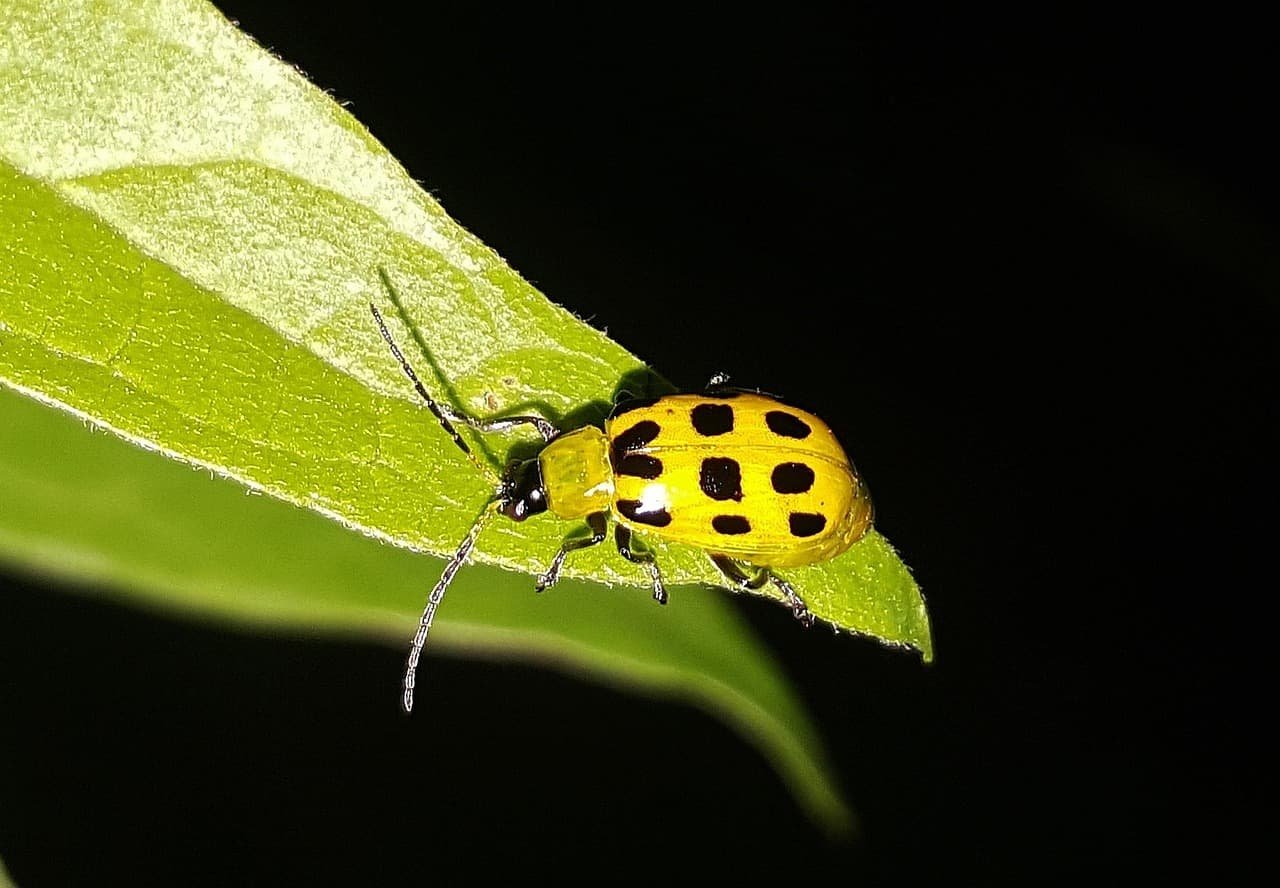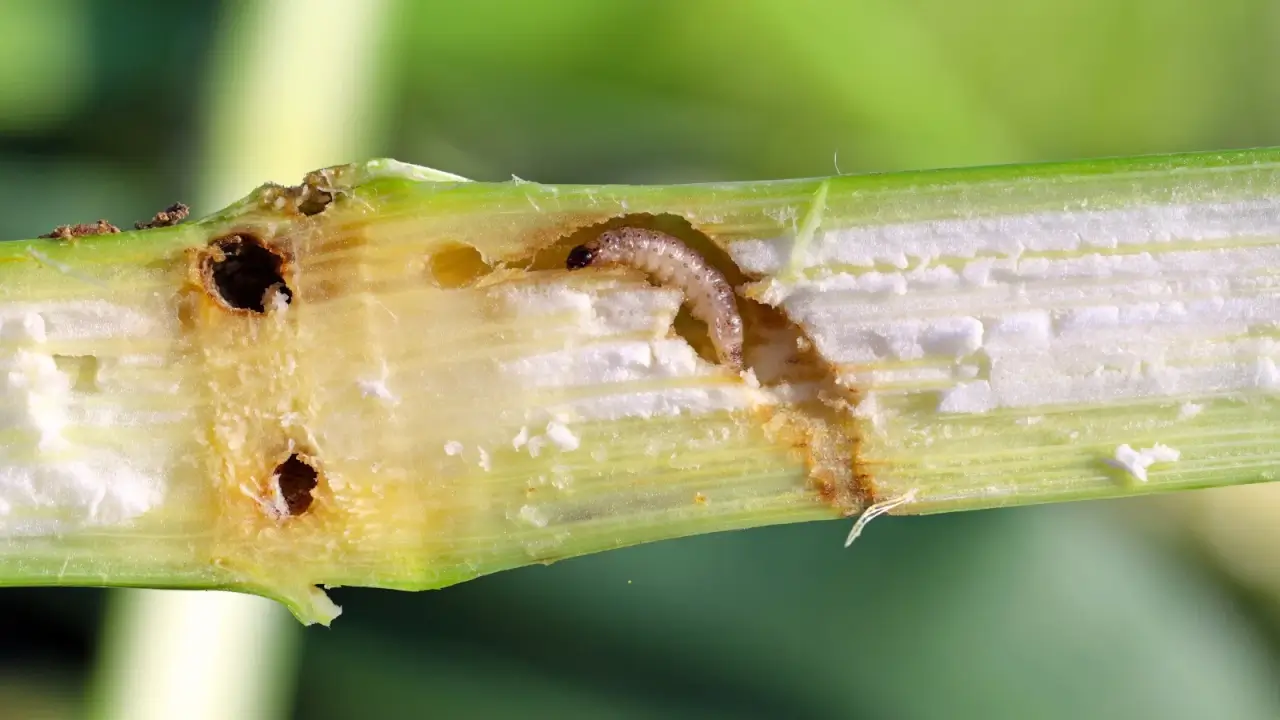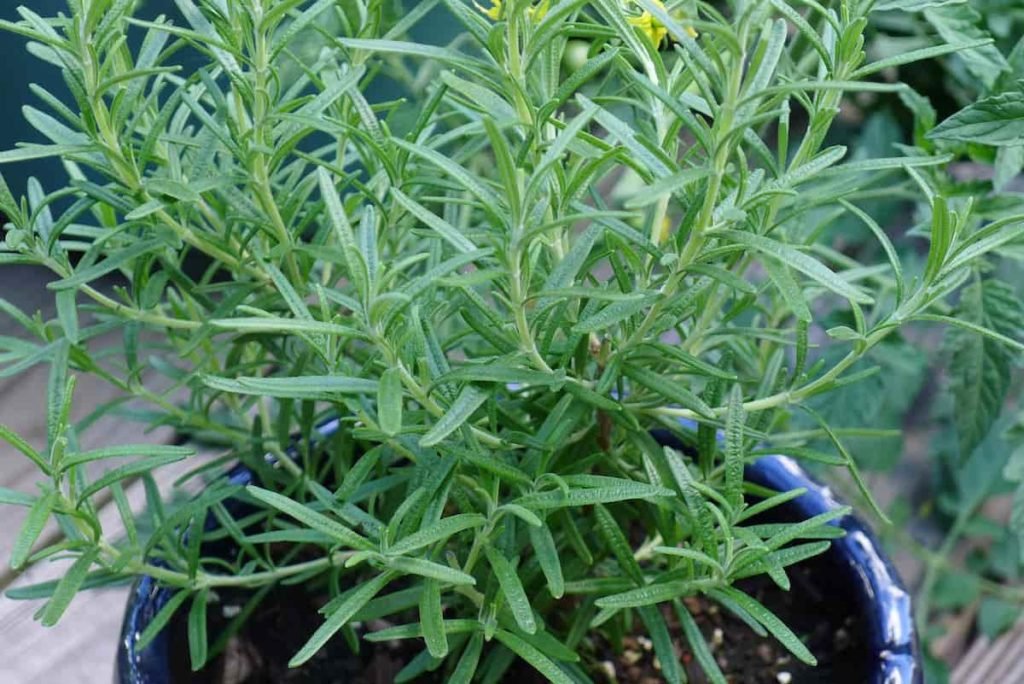Cucumber beetles are a major issue for those who grow their food organically because they feed on all parts of plants, including leaves, stems, and roots. This insect, which includes striped and spotted varieties, may wreak havoc on cucumber, melon, and squash crops.
Their offspring, the cucumber beetle larvae, do far more harm to plants when they feed on the roots. Fortunately, organic pest management and do-it-yourself approaches offer safe, eco-friendly methods to reduce cucumber beetle infestations.
If you want to keep your garden secure from beetles without resorting to harmful pesticides, this comprehensive guide will show you how to do so naturally. Including the most effective organic alternatives, home remedies, and organic pest management, we will discuss practical ways to eliminate cucumber beetles.
Knowing the habits of pests allows gardeners to apply targeted treatments, such as identifying the peak activity times of cucumber beetles. With a focus on organic pest control for cucumber beetles, this article equips you with the necessary skills to protect your crops in an environmentally conscious manner. Here are fifteen easy ways to get rid of cucumber beetles the natural way.
Natural Ways to Tackle Cucumber Beetles with Organic Pest Control
Plant Companion Crops to Naturally Deter Cucumber Beetles
Companion planting with marigolds, nasturtiums, or radishes can help keep cucumber pests at bay. The presence of these companions reduces the pest population since cucumber beetles are instinctively repulsed by their smells.
Marigolds release a strong odor that discourages beetles, while radishes are perfect for catching cucumber beetles since they divert pests from main crops. Consider cultivating catnip as an organic companion plant; research has demonstrated that it can deter cucumber beetle activity.
This strategy aligns with organic pest management for homemade cucumber beetles by exploiting natural plant synergies. For cucumber beetle companion planting to be successful, it is important to precisely space companion plants so they do not compete with your crops for nutrients.

Furthermore, growing marigolds creates a barrier that repels cucumber beetles and hinders their navigational abilities. Alternating companion plants with the changing seasons can help keep soil healthy and enhance natural pest control for cucumber beetles. Knowing when cucumber beetles are most active—typically in early summer—will help you time companion planting more efficiently. In addition to attracting cucumber beetle larvae, predators such as parasitic wasps are attracted to areas that promote biodiversity. Creating your own organic pest treatment for cucumber beetles is a cost-effective and environmentally friendly method to safeguard your garden from pests.
| Companion Plants | Effect on Cucumber Beetles | Planting Tips | Additional Benefits |
|---|---|---|---|
| Marigolds | Repels with strong odor | Space evenly | Hinders beetle navigation |
| Nasturtiums | Deters beetles | Avoid overcrowding | Enhances soil health |
| Radishes | Traps beetles | Plant near crops | Diverts pests from main crops |
| Catnip | Deters beetle activity | Use sparingly | Attracts predatory wasps |
| Dill | Attracts predators | Plant in clusters | Promotes biodiversity |
| Yarrow | Attracts beneficial insects | Provide water sources | Supports predator populations |
Use Row Covers to Physically Block Cucumber Beetles
Regarding row coverings for cucumber beetle protection, floating row covers offer a physical barrier that discourages pests from visiting immature plants. Using lightweight materials that let water and sunshine pass through while keeping beetles out is a great way to avoid cucumber beetle damage.
Cover rows before planting and remove them to allow bees access during pollination; these are all natural ways to manage cucumber beetles. For effective row coverings, carefully secure the edges to prevent cucumber beetles from slinking below.
This method encourages the best organic pest management for cucumber beetles by reducing the need for insecticides. Floating row coverings for cucumber beetles should be made of permeable materials to avoid overheating the plants.
To enhance physical barriers against cucumber beetles, check covers for tears or gaps on a regular basis. Understanding that cucumber beetles are at their busiest first thing in the morning will help you plan your inspections more effectively. Row coverings deter cucumber beetle larvae by lowering the quantity of eggs deposited by adults. An economical and eco-friendly option for controlling cucumber beetle pests is to do it yourself and repurpose old sheer curtains. This strategy gets rid of cucumber beetles without using herbicides by physically blocking them from the plants. Incorporating row coverings guarantees a bountiful harvest by protecting crops and promoting healthy growth.
Apply Diatomaceous Earth to Repel and Kill Cucumber Beetles
You can repel cucumber beetles by scattering food-grade diatomaceous earth around the bases of plants. This all-natural powder, made from fossilized algae, is a natural insecticide that kills beetles by dehydrating their exoskeletons as they scratch them.
If you want to protect your cucumbers against beetles, sprinkle a little diatomaceous earth on the soil and leaves before and after rain. When it comes to organic cucumber beetle control, this is a safer option than using hazardous chemicals.
Apply diatomaceous earth pesticide evenly using a dust applicator. Supplement other organic pest management strategies using diatomaceous earth, like companion planting. Keep in mind that emerging cucumber beetles are most active in the spring, and then apply diatomaceous earth to target them.
In addition to helping with population control, this method affects cucumber beetle larvae in the soil. Keep the powder dry when using the best organic pesticide on cucumber beetles for optimal results. Applying diatomaceous earth as directed can effectively control cucumber beetles around people and animals. Curcumin beetles are a serious problem in gardens, but there is a sustainable and inexpensive way to get rid of them without harming the garden’s ecology.
Make a Homemade Cucumber Beetle Trap for Easy Monitoring
You can make a simple cucumber beetle trap using yellow sticky cards or plastic cups covered in adhesive materials. These traps effectively monitor cucumber beetle populations due to their attraction to the color yellow.
By placing traps near plants and examining them daily, one can construct a homemade cucumber beetle trap. This program promotes organic pest control for cucumber beetles without the use of chemicals by offering an alternative.
The most effective bait traps for cucumber beetles include oils that attract the insects, like cinnamon or clove. Put yellow sticky traps at the height of the plants to catch cucumber beetles for the greatest results.
Combine it with other methods, such as row coverings, to make a more effective DIY cucumber beetle trap. You can catch the most cucumber beetles by setting your traps first thing in the morning, when they are most active. Reducing the number of cucumber beetles before they produce eggs is one way to deter them. To naturally repel cucumber beetles, try doing some DIY projects and reusing common home items, including plastic containers. According to the best organic pest management for cucumber beetles, you can prevent damage to your crops by catching the pests early. This procedure will lead to healthier plants.
| Trap Types | Materials | Placements | Attractant |
|---|---|---|---|
| Sticky Cards | Yellow cards | Near plants | None |
| Plastic Cups | Adhesive-coated cups | At plant height | Cinnamon oil |
| Sticky Traps | Yellow sticky tape | Around crops | Clove oil |
| Bottle Traps | Plastic bottles | Near plants | None |
| Cup Traps | Adhesive cups | At plant base | None |
| Homemade Traps | Recycled containers | Near plants | None |
Use Neem Oil as a Natural Insecticide for Cucumber Beetles
The remedy can be achieved by diluting neem oil for cucumber beetles with water and a few drops of dish soap and then misting the plants that are affected. Because it prevents cucumber beetles from feeding and reproducing, neem oil is the best organic pesticide for these pests.
Applying neem oil to cucumber beetles in the morning or late evening will help protect pollinators. This method encourages organic pest management for do-it-yourself remedies against cucumber beetles.

If you want the neem oil pest control to work, you should reapply it after a hard rain or every 7 to 10 days. Apply a small patch of organic pest control neem oil to a test plant to make sure it doesn’t cause any burns to the leaves.
You should begin treating in the spring, when cucumber beetles are at their busiest. Another benefit of neem oil is that it reduces the population of soil-dwelling insects by discouraging cucumber beetle larvae. Combine neem with additional methods, such as traps, to make an all-natural insecticide. In its correct use, neem oil is an effective cucumber insect killer that poses no threat to humans or the environment. This organic pest management method is perfect for cucumber beetles and can be done at home, saving crops and garden biodiversity.
Spray Insecticidal Soap to Safely Eliminate Cucumber Beetles
Use a homemade or store-bought insecticidal soap to quickly eliminate cucumber beetles. Because it suffocates the insects, this solution is an effective natural pesticide against beetles.
For natural, at-home pest control of cucumber beetles, this recipe is a wonderful alternative to harmful chemicals. To create a cucumber beetle insecticidal soap, mix liquid castile soap with water and apply the mixture directly to the bug.
Insecticidal soap pest management is most effective when applied at cooler times of day so as not to harm leaves. Insecticidal soap is an effective tool for organic pest management; reapply as needed until the beetle population declines.
If you want to get the best chance of catching cucumber beetles, it’s best to spray in the morning. Similarly, this method affects cucumber beetle larvae that feed on plant surfaces. Use an effective organic pesticide on the cucumber plants’ leaves and stems. Cucumber beetle-safe insecticidal soap is completely harmless to both humans and other animals. Cucumber beetle damage can be minimized, and crop growth can be enhanced with this eco-friendly, do-it-yourself organic pest control strategy.
Create a Vinegar-Based Spray to Repel Cucumber Beetles
A homemade vinegar spray that repels cucumber beetles is formed by mixing white vinegar and water in equal proportions, then adding a tiny bit of dish detergent. As a natural pesticide, vinegar’s strong odor drives away unwanted pests.
Instead of spraying vinegar onto blossoms, spray the plant leaves to protect pollinators and deal with cucumber beetles.
If you want to keep beetles at bay, you should reapply vinegar every few days or after it rains. To enhance vinegar’s organic pest control, conduct a small-scale test to ensure plants can survive the solution.
To find out when cucumber beetles are most active, try spraying them with vinegar in the early summer. Applying this method prevents cucumber beetles from feeding or laying eggs. To make cucumber beetle spray more effective, add a pinch of cayenne pepper. When it comes to cucumber beetles, vinegar is an eco-friendly and safe solution to use in gardens. This do-it-yourself organic pest control strategy can minimize and economically eliminate cucumber beetle damage without compromising your garden’s organic designation.
Incorporate Essential Oils to Repel Cucumber Beetles Naturally
Two essential oils, eucalyptus and peppermint, can effectively repel cucumber beetles. Eucalyptus is a natural deterrent, while peppermint is an insect repellent. These oils generate strong aromas that impede beetle behavior, much like natural pesticides.
To make essential oils for cucumber pests, dip plants in a mixture of a few drops of oil and water, then add a carrier like dish soap. As a result, more people are turning to natural, plant-based remedies to rid their homes of cucumber beetles.
To keep pests at bay with essential oils, reapply every few days, particularly after it rains. Rotate essential oils for organic pest control to prevent beetles from becoming accustomed to them.

Because some oils, like clove, can attract cucumber beetles when used topically, it’s important to utilize only repellent oils. You know that cucumber beetles are most active in the morning; therefore, that’s when you should apply it. This method can lessen cucumber beetle infestations. To get rid of cucumber beetles in an organic way, use a mixture of peppermint and lavender. This strategy ensures a flourishing garden by avoiding cucumber beetle damage while preserving the greatest organic pest control for cucumber beetles.
| Essential Oils | Effects | Application Tips | Caution |
|---|---|---|---|
| Peppermint | Repels beetles | Mix with water | Rotate with other oils |
| Eucalyptus | Deters beetles | Use with dish soap | Avoid overuse |
| Lavender | Repels beetles | Apply in morning | Test on small area |
| Rosemary | Deters beetles | Reapply after rain | Avoid clove oil |
| Thyme | Repels beetles | Use sparingly | Test for plant safety |
| Cedarwood | Deters beetles | Mix with carrier | Rotate to prevent adaptation |
Encourage Natural Predators to Control Cucumber Beetle Populations
Cucumber beetles can be naturally controlled by attracting beneficial insects that prey on them, such as ladybugs, lacewings, parasitic wasps, and so on. This predatory species naturally reduces beetle and cucumber beetle populations by eating their young.
To control useful insects like cucumber beetles and attract predators, plant nectar-rich flowers like dill or yarrow. This methodology is consistent with organic pest management practices for do-it-yourself remedies against cucumber beetles and supports a balanced ecosystem.
For effective control of pests by natural predators, avoid using broad-spectrum pesticides that harm beneficial insects. To maximize the effectiveness of natural predators in organic pest control, it is essential to provide water sources, like shallow dishes, for insects.

Once you know when the cucumber beetles are most active, you can build predator habitats in the spring. This method encourages the best organic pest management for cucumber beetles by leveraging nature’s own pest control powers. Cultivating various plants attracts beneficial insects like cucumber beetles, which helps maintain predator numbers. When natural enemies like cucumber beetles are considered, this tactic becomes more eco-friendly and long-lasting. In addition to protecting your crops from cucumber beetle damage and promoting biodiversity in your garden, this do-it-yourself organic pest control strategy can help eradicate cucumber beetles.
Practice Crop Rotation to Disrupt Cucumber Beetle Life Cycles
When growing cucumbers, beans, or lettuce, rotate them each year with non-host crops to keep cucumber pests at bay. This strategy reduces the soil population of cucumber beetle larvae by interfering with the insect’s life cycle.
By adhering to a three-year rotation cycle, we can successfully crop-rotate the cucumber beetle, thereby depriving pests of their preferred hosts. This campaign encourages DIY organic pest management for cucumber beetles by utilizing cultural norms.
Create a garden map to keep track of your plantings and learn how to rotate crops to keep pests at bay. If you want healthier soil, better crop rotation, and more effective organic pest control, plant cover crops.
When planning your spring plantings, remember to rotate your crops to avoid cucumber beetles. This method is helpful in preventing cucumber beetles by decreasing the availability of food for them. For the most efficient organic pest control of cucumber beetles, combine rotation with other tactics like traps. One environmentally friendly and non-chemical way to keep cucumber beetles at bay is to rotate crops. You can reduce cucumber beetle damage and ensure healthier crops with this do-it-yourself organic pest management strategy. By interfering with the pest’s reproductive cycle, you can cultivate a hardy garden that effectively deters infestations.
Use Soapy Water to Deter and Kill Cucumber Beetles
To make effective soapy water, combine one tablespoon of liquid dish detergent with one quart of water. Then, spray the mixture directly over cucumber pests. By decomposing the exoskeletons of the insects, the solution functions as a natural pesticide.
Applying a soapy water insecticide first thing in the morning will catch cucumber beetles at their most active. This approach is in keeping with organic pest management methods and home remedies for cucumber beetles that use common household items.
Soapy water will only kill pests if you cover all the leaves. For better organic bug control in soapy water, reapply every few days.
Similarly, this method affects cucumber beetle larvae that feed on plant surfaces. The best organic pesticide for cucumber beetles is a gentle, biodegradable soap that won’t harm plants. Soapy water isn’t just harmless to humans and animals; it’s also harmless to cucumber beetles. Cucumber beetles can be a real pain, but this easy-to-follow DIY organic pest control solution will help you say goodbye to those pesky pests and their damage. An eco-friendly and economical way to protect your crops while still following organic gardening principles is to use soapy water sprays.
Select Resistant Cucumber Varieties to Minimize Beetle Damage
Choose cucumber varieties that are resistant to beetle feeding, like Marketmore 76 or Salad Bush, when you’re dealing with cucumber varieties that are resistant. Cucumber beetles do less harm to these plants because they are more resistant to pest assault.
To grow beetle-resistant cucumbers, it’s best to buy seeds from reputable seed banks and try out various varieties in your garden. The evidence supports the use of plant genes for organic, home-based pest control of cucumber beetles.
For effective pest management, use resistant types alongside other measures, such as row covers. Maintaining healthy soil enhances both plant vigor and resistance to organic pest management.
It is possible to plant resistant cultivars of cucumbers early if the peak activity times of cucumber beetles are known. This strategy is useful for preventing cucumber beetles by decreasing their impact. The most effective organic method of controlling cucumber beetles is to grow resistant crops that diversify pests’ food sources. This method produces resistant varieties that are chemical-free and safe from cucumber beetles. Using this method for managing cucumber beetle pests organically on your own will make your garden more resilient, ensure abundant harvests, and control the beetle population in a natural way.
| Cucumber Variety | Resistance Level | Seed Sources | Companion Methods |
|---|---|---|---|
| Marketmore 76 | High | Reputable seed banks | Row covers |
| Salad Bush | High | Seed catalogs | Traps |
| Straight Eight | Moderate | Local nurseries | Companion planting |
| Diva | High | Online suppliers | Neem oil |
| Lemon Cucumber | Moderate | Seed banks | Insecticidal soap |
| Persian | Moderate | Garden centers | Crop rotation |
Maintain Garden Cleanliness to Reduce Cucumber Beetle Habitats
To keep cucumber beetles out of your garden, you should clear it of any plant remnants, weeds, and abandoned harvests. Because fewer places are available for cucumber beetle adults and their young to live, this strategy helps keep infestations to a minimum.
After harvest, remove garden beds to disrupt the life cycles of pests like cucumber beetles. This recommendation fits nicely with the principles of using sanitation to fight pests, using home remedies, and using organic pest management for cucumber beetles.
For a garden that is free of pests, mulch with straw to stop weeds from attracting beetles. Keep your landscape neat and tidy with organic pest control by composting garden debris.
To reduce the number of places where cucumber beetles can spend the winter, you should tidy up in the fall, when they are most active. This method helps keep cucumber beetles at bay by decreasing their breeding grounds. If you want the best organic pest management for cucumber beetles, keep your borders clean. This method allows you to repel cucumber beetles and maintain a clean garden without causing any harm to the environment. This organic pest control strategy for cucumber beetles is a do-it-yourself project that promotes a healthier garden by reducing damage through preventative maintenance.
Apply Kaolin Clay to Create a Protective Barrier Against Beetles
To protect cucumbers against cucumber beetles, spray plants with a solution of kaolin clay. The solution will produce a powdery, white barrier that acts as a repellent. This clay reduces the damage that cucumber beetles do by making plants less appealing to pests.
Use a sprayer to evenly coat the cucumber leaves with kaolin clay, which will keep insects at bay. Mix the clay with water. The result supports organic pest control for cucumber beetles using natural, mineral-based, at-home methods.
Reapply the kaolin clay after a heavy rain to keep insects at bay. To make kaolin clay even more effective as an organic pesticide, mix in some neem oil.
Because cucumber beetles are most active first thing in the morning, that’s when you should apply it for best adhesion. This method also stops cucumber beetle larvae from hatching. The most effective organic pesticide against cucumber beetles can be made from food-grade kaolin clay. To get rid of cucumber beetles, use kaolin clay. It’s harmless for plants and people alike. Cucumber beetles respond well to this organic pest management method, which you can apply at home to save crops and maintain a sustainable garden environment.
Monitor and Hand-Pick Beetles for Immediate Control
Pick your own cucumber beetles by hand by inspecting plants daily and plucking off pests by immersing them in soapy water. This reduces cucumber beetle damage and prevents adult beetles from laying eggs.
When dealing with cucumber beetles, it’s best to check plants first thing in the morning. This approach fits perfectly with the organic pest control methods, home remedies, and human labor that have been used to combat cucumber beetles.
To avoid skin irritation and successfully control pests that can be picked up by hand, wear gloves. Reduce beetle populations by combining organic pest control methods, such as hand-picking, with traps.
Learn when cucumber beetles are most active during the summer to keep a closer watch for them. This method also reduces the population of cucumber beetle larvae. To get the most out of your efforts to manage cucumber beetles organically, use a combination of methods, including row coverings. Safe cucumber beetles are hand-picked using an approach that does not include chemicals. This organic pest management method is perfect for cucumber beetles and can be done at home. Plus, it will keep your plant free of harmful chemicals.
Conclusion
Monitoring, prevention, and natural therapies are all part of an integrated approach to managing organic cucumber beetles. Gardeners can use any one of the fifteen methods—from do-it-yourself traps to organic pest control—or even the finest organic insecticide, like neem oil, to ward off cucumber beetles and protect their harvests.
Sustainable and environmentally safe practices are at the forefront of these methods, which have their origins in traditional remedies for cucumber beetle control. Using diatomaceous earth to keep cucumber beetles at bay or encouraging pest enemies is only one of many strategies that contribute to a flourishing garden.
Knowing when pests like cucumber beetles are most active, for example, can help make these strategies more effective. With the help of organic pest management and natural solutions, you may reduce cucumber beetle damage and grow healthy cucurbits.















Leave a Reply